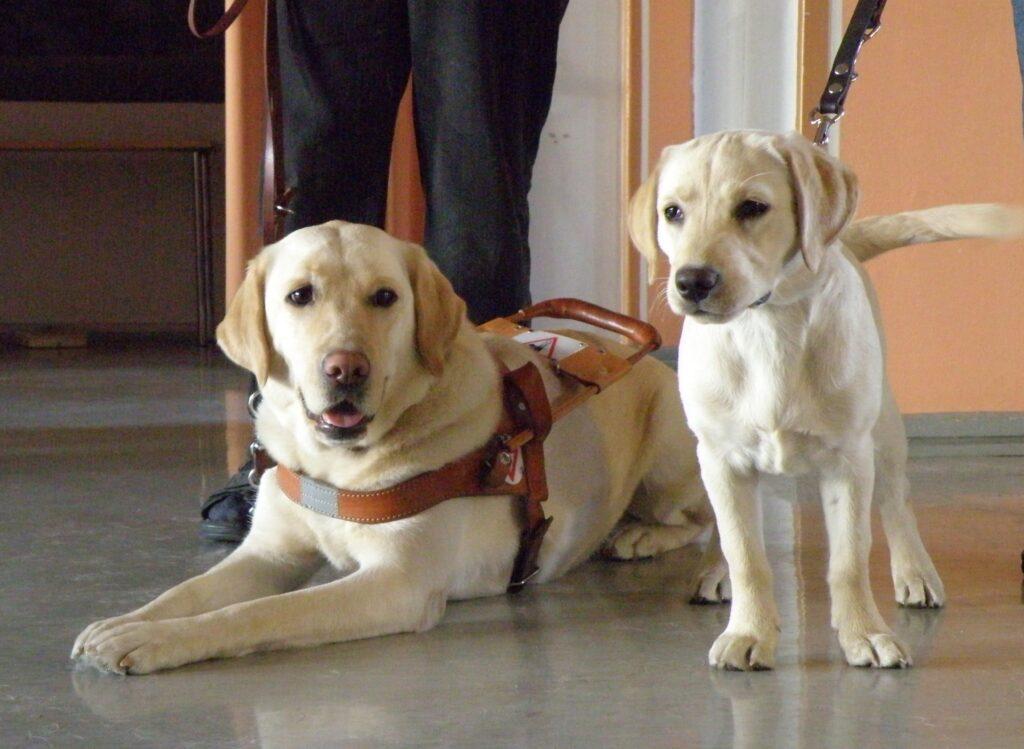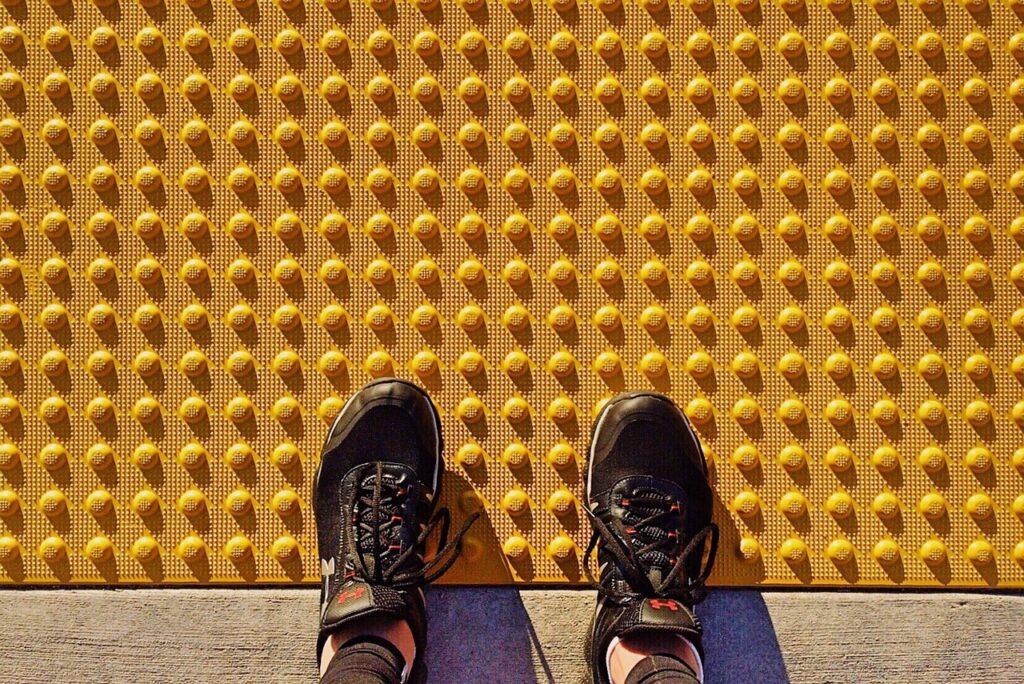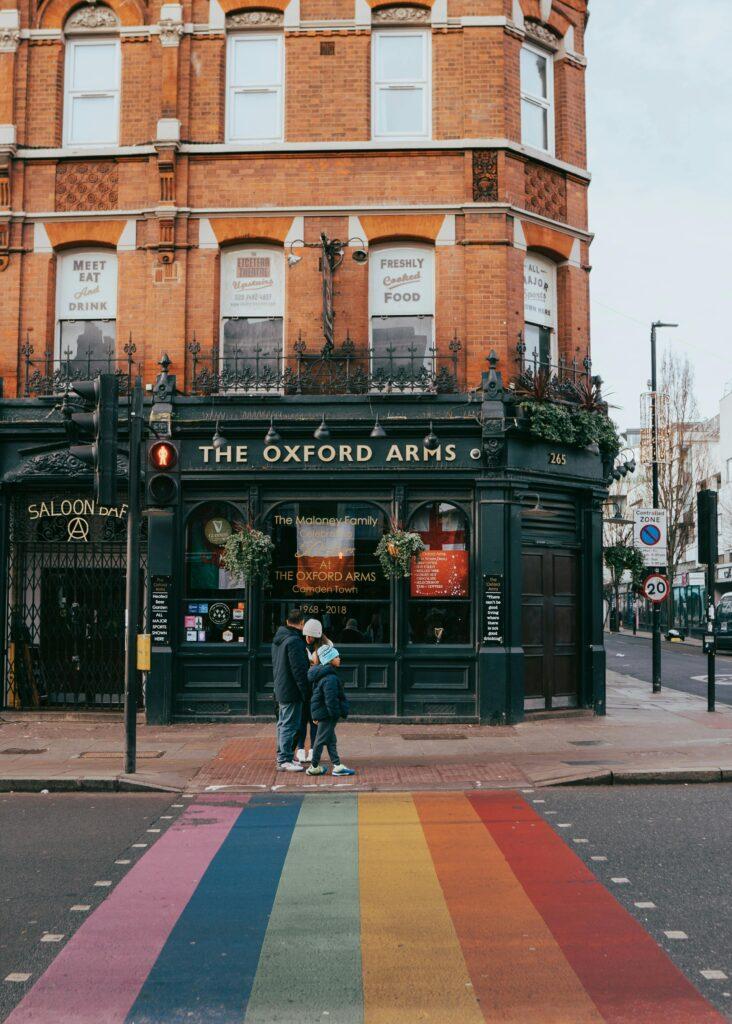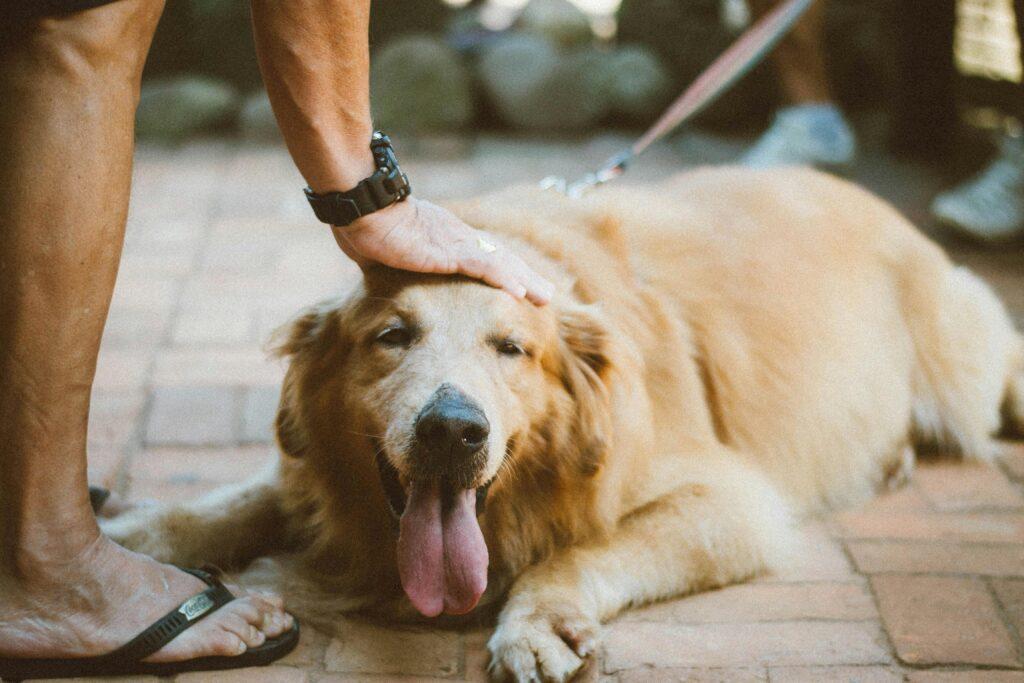
by Ben Andrews, author of the ‘Better Places’ picture book series.
Wednesday 24th April is National Guide Dog Day!
While Nicky from our picture book ‘Nicky and Candy’s Street’ doesn’t have a guide dog, she may well do one day. So we thought we’d take this opportunity to show these helpful pawfessional good boys and girls some love by sharing three ways we can make places better for guide dogs.
First up, tactile paving.

Tactile paving are these little bumps we have at crossings.
Tactile paving makes it easier to identify a crossing for some blind people by sight, while others can feel them underfoot, with their white cane and guide dogs are trained to associate them with crossing the road. They’re usually in concrete and come in red or yellow to signify controlled or uncontrolled crossing but some areas have taken to installing metal studded tactile paving.
But this tactile paving becomes slippery when wet, is harder to identify by sight by people and dog and when too hot can burn guide dogs paws making them problematic for the people and pooches they’re supposed to be there to serve. So, let’s stick to what we know works with the traditional red, yellow and concrete tactile paving.
Next up, crossings.

It’s important to support campaigns for any community but not if it’s at the expense of another and puts them in danger.
And this is exactly what happens when crossings are painted multicoloured to support awareness for LGBTQ+ communities as it makes it harder for guide dogs to identify them as crossings.
It only takes an uncertain misstep or hesitancy in the road, and it could put both guide dog and user at real risk
So, let’s look to other infrastructure to support campaigns, leave crossings alone and stick to their natural black-and-white colouring.
And, finally, people.

Guide dogs are very easy to love, want to stroke and pay lots of attention to, but doing so while they’re working (i.e., guiding a guide dog user around), can be very distracting for them putting both the guide dog and user at risk.
So, it’s important we refrain from fussing over other guide dogs, let them do their job without distraction and save your dog love for others with less responsibility.
And that’s three ways we could make places better for guide dogs.
Visit www.betterplaces.uk to learn more about Nicky and Candy’s Street and how we can make more places better for disabled people.
About Ben Andrews
Ben Andrews is a disability rights advocate and author from Salford, Greater Manchester. As a person who is registered blind, he has faced many barriers to access and wants to show how these can be removed to make the lives of disabled people better. Named as one of the Shaw Trust’s most influential disabled people’ in the Disability Power 100 2022, Ben is determined to spread the word to children and educators across the country with his books.
